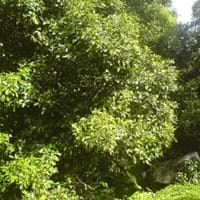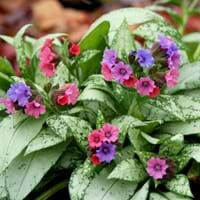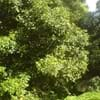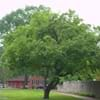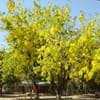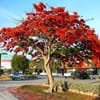Life Span
Perennial
Perennial
Type
Tender Perennial
Perennial
Origin
Hybrid origin
Hybrid origin
Types
Not Available
Benediction lungwort, Excalibur lungwort
Number of Varieties
Not Available
Habitat
meadows, Pastures
Forest edges, Mountains
USDA Hardiness Zone
7-15
4-8
AHS Heat Zone
Not Available
8-4
Sunset Zone
H1, H2, 14, 15, 16, 17, 18, 19, 20, 21, 22, 23, 24
1a, 1b, 2a, 2b, 3a, 3b, 4, 5, 6, 7, 8, 9, 14, 15, 16, 17
Habit
Clump-Forming
Cushion/Mound-forming
Flower Color
White, Yellow, Purple, Brown
Pink, Rose, Blue Violet
Flower Color Modifier
Bicolor
Not Available
Fruit Color
Dark Red
Not Available
Leaf Color in Spring
Green
Green, Gray Green, Silver
Leaf Color in Summer
Green, Yellow green
Green, Gray Green, Silver
Leaf Color in Fall
Green
Green, Gray Green, Silver
Leaf Color in Winter
Green
Light Green
Leaf Shape
Oval
Lung shaped
Plant Season
Spring, Summer, Fall, Winter
Spring, Summer, Fall
Sunlight
Full Sun, Partial Sun
Partial Sun, Partial shade, Full Shade
Type of Soil
Loam, Sand
Clay, Loam, Sand
The pH of Soil
Acidic, Neutral, Alkaline
Acidic, Neutral, Alkaline
Soil Drainage
Average
Well drained
Bloom Time
Indeterminate
Early Spring, Spring, Late Winter
Tolerances
Drought
Drought
Where to Plant?
Ground
Ground
How to Plant?
Seedlings, Stem Cutting
Divison, Seedlings
Plant Maintenance
Medium
Medium
Watering Requirements
Average Water Needs
Water when soil is dry, when new, water every week
In Summer
Lots of watering
Drought Tolerant
In Spring
Moderate
Average Water
In Winter
Average Water
Adequately
Soil pH
Acidic, Neutral, Alkaline
Acidic, Neutral, Alkaline
Soil Type
Loam, Sand
Clay, Loam, Sand
Soil Drainage Capacity
Average
Well drained
Sun Exposure
Full Sun, Partial Sun
Partial Sun, Partial shade, Full Shade
Pruning
Remove damaged leaves, Remove dead branches, Remove dead leaves
Remove damaged leaves, Remove dead branches, Remove dead leaves
Fertilizers
All-Purpose Liquid Fertilizer, Well-rotted manure
All-Purpose Liquid Fertilizer
Pests and Diseases
Canker, Nematodes, Red blotch, Scale, Soft scales
Powdery mildew, Slugs
Plant Tolerance
Drought
Drought
Flower Petal Number
Not Available
Single
Foliage Texture
Medium
Coarse
Foliage Sheen
Glossy
Matte
Attracts
Nematodes, White peach scale
Not Available
Allergy
Avoid during Pregnancy, Liver disease
Not Available
Aesthetic Uses
Not Used For Aesthetic Purpose
Showy Purposes
Beauty Benefits
Acne, Good for skin and hair, Remove blemishes
Not Available
Environmental Uses
Air purification
Air purification, Provides ground cover
Medicinal Uses
Cough, Diarrhea, Gastritis, Vomiting
Astringent, Demulcent, Diaphoretic, Diuretic, Emollient, Exoectorant, Homeopathy, Opthalmic, Resolvent
Part of Plant Used
Buds, Flowers
Leaves
Other Uses
Used as a nutritious food item, Used as a spice
Used for its medicinal properties
Used As Indoor Plant
No
No
Used As Outdoor Plant
Yes
Yes
Garden Design
Edible, Herb / Vegetable, Shade Trees
Edging, Groundcover, Mixed Border, Rock Garden / Wall
Botanical Name
Syzygium aromaticum
PULMONARIA 'Berries and Cream' PP10597
Common Name
Clove
Berries and Cream Lungwort, Lungwort
In German
Nelke
Lungenkraut
In French
Clou de girofle
pulmonaire
In Spanish
Clavo
Lungwort
In Greek
Σκελίδα σκόρδο
Lungwort
In Portuguese
dente de alho
pulmonária
In Latin
Castanea
Lungwort
Phylum
Magnoliophyta
Ascomycota
Class
Magnoliopsida
Ascomycetes
Order
Myrtales
Peltigerales
Family
Musaceae
Boraginaceae
Genus
Syzygium
Pulmonaria
Clade
Angiosperms, Eudicots, Rosids
Angiosperms, Asterids, Eudicots
Tribe
Syzygieae
Boragineae
Subfamily
Myrtoideae
Boraginoideae
Season and Care of Clove and Lungwort
Season and care of Clove and Lungwort is important to know. While considering everything about Clove and Lungwort Care, growing season is an essential factor. Clove season is Spring, Summer, Fall and Winter and Lungwort season is Spring, Summer, Fall and Winter. The type of soil for Clove is Loam, Sand and for Lungwort is Clay, Loam, Sand while the PH of soil for Clove is Acidic, Neutral, Alkaline and for Lungwort is Acidic, Neutral, Alkaline.
Clove and Lungwort Physical Information
Clove and Lungwort physical information is very important for comparison. Clove height is 300.00 cm and width 100.00 cm whereas Lungwort height is 25.50 cm and width 30.50 cm. The color specification of Clove and Lungwort are as follows:
Clove flower color: White, Yellow, Purple and Brown
Clove leaf color: Green
Lungwort flower color: Pink, Rose and Blue Violet
- Lungwort leaf color: Green, Gray Green and Silver
Care of Clove and Lungwort
Care of Clove and Lungwort include pruning, fertilizers, watering etc. Clove pruning is done Remove damaged leaves, Remove dead branches and Remove dead leaves and Lungwort pruning is done Remove damaged leaves, Remove dead branches and Remove dead leaves. In summer Clove needs Lots of watering and in winter, it needs Average Water. Whereas, in summer Lungwort needs Drought Tolerant and in winter, it needs Adequately.
